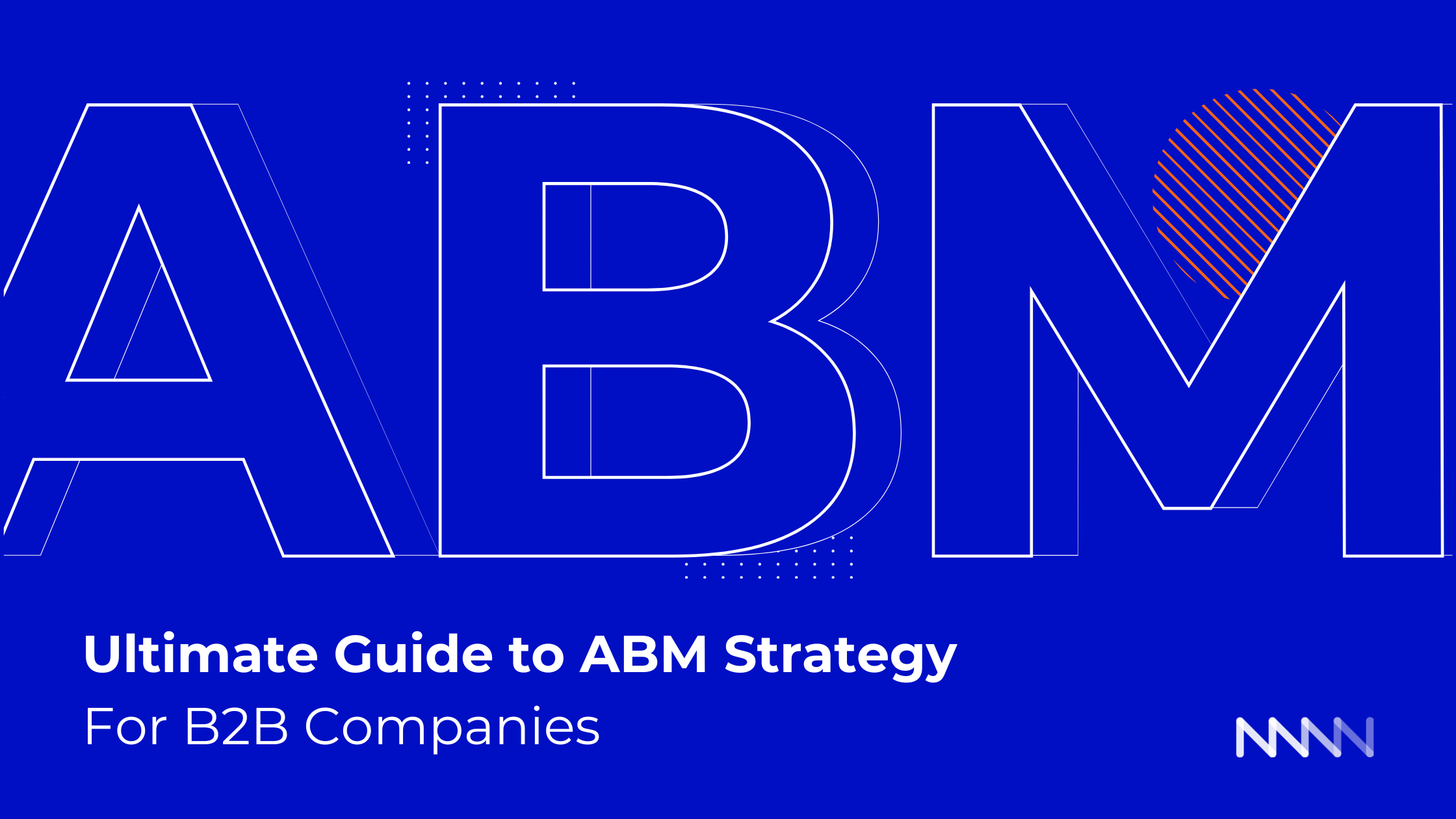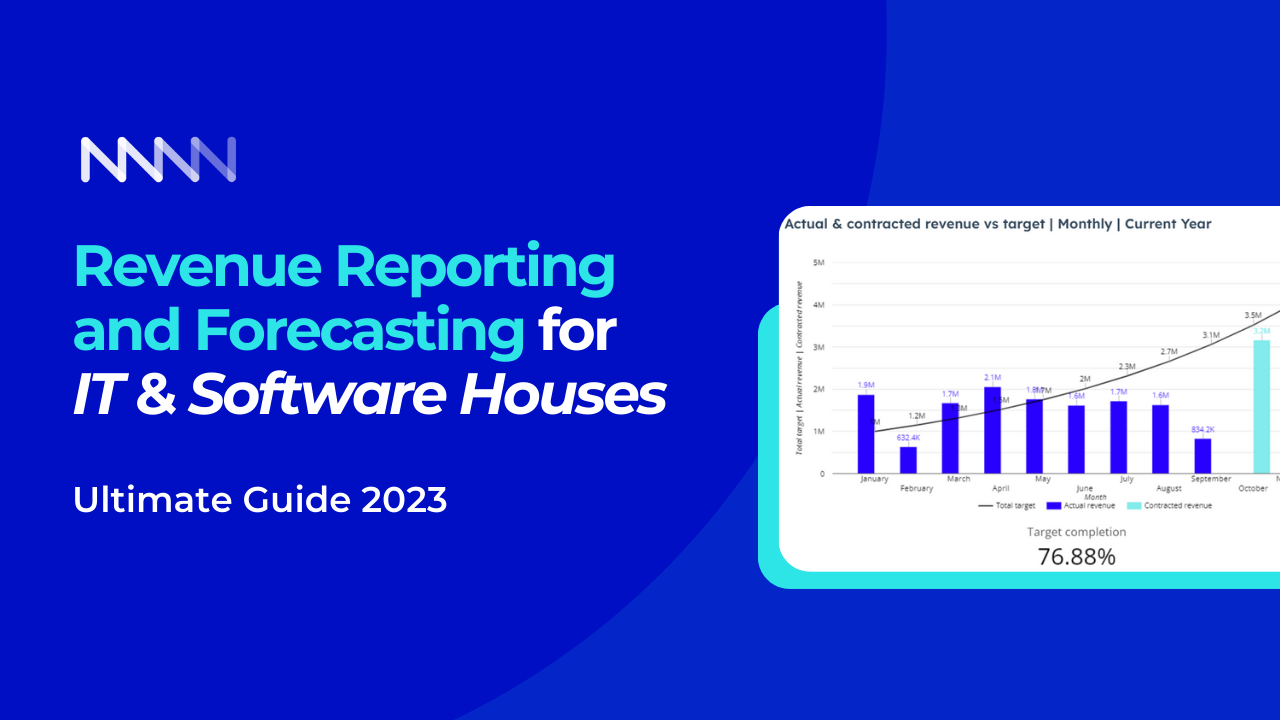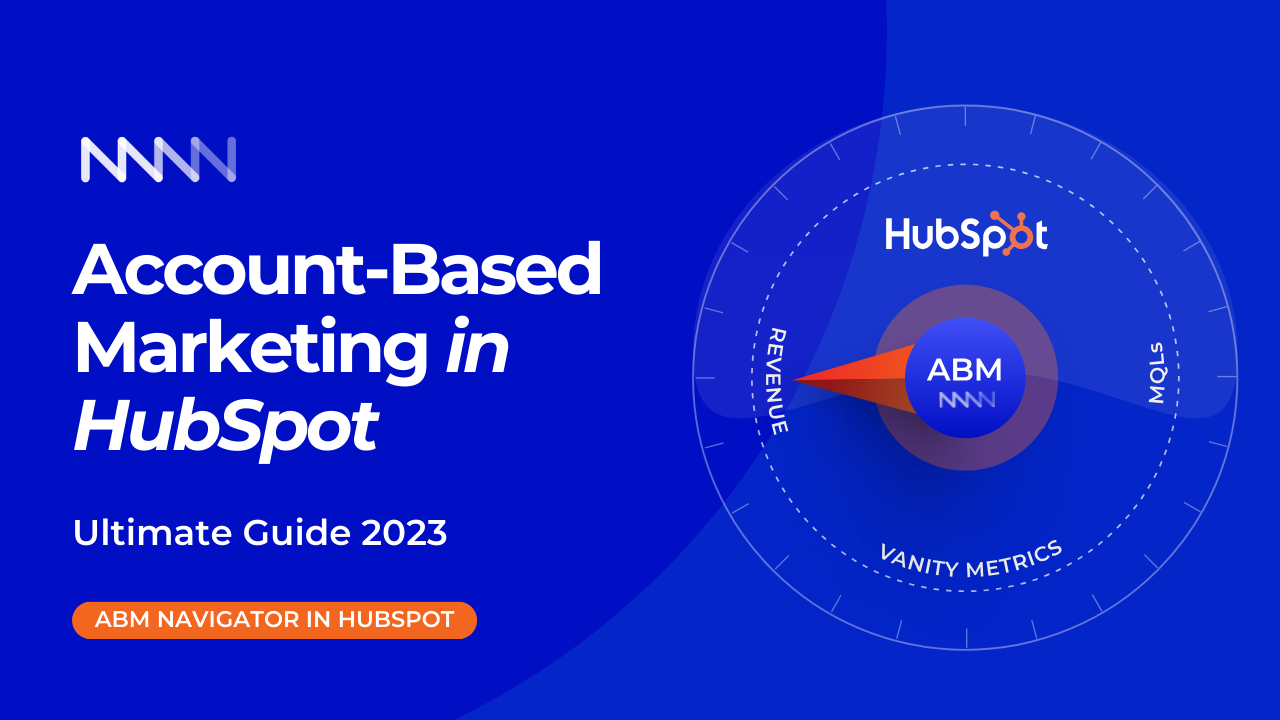6 MIN READ
Related articles
December 14, 2023
November 17, 2023
We are in a crisis. We are very disconnected in a world where we thought we were connected.
Many things have changed recently, like the pandemic, how we track customers, and data privacy. We also have new technology that makes it harder to be connected. And finally, the economy is very uncertain right now.
Table of Contents
We are in a crisis. We are very disconnected in a world where we thought we were connected.
Many things have changed recently, like the pandemic, how we track customers, and data privacy. We also have new technology that makes it harder to be connected. And finally, the economy is very uncertain right now.
In today's economy, it can be hard to predict how well your business will do. The market is unstable, and many social and political issues are going on. It's hard to know what will happen next.
The way businesses used to reach and connect with customers is not working anymore. This is especially hard for companies that rely on digital methods because those are the ones that have slowed down recently.
Sales operation feels frozen, But why?
My nights are ruined by it.

However, one thing that doesn't change is the need for good sales operations. Companies need to have people who can connect to customers.
Talking to our customers and partners (HubSpot), we see more and more a disconnect in systems, disconnect in people and disconnect in companies from customers. The CEO of HubSpot wrote about it in detail here.
The purpose of this article is to explain the importance of sales operations with a focus on SDRs and why this often overlooked team is essential to your success.
When I build sales ops for my clients, I keep seeing 3 top challenges I will explore in this article.
These are the critical pillars to get your SDRs ramped up quickly, lets's explore each.
I started in sales in 2004; in AIESEC, my CRM was excel files in 2008; I discovered HubSpot and in 2015, their CRM, Sidekick, game-changer back then.
Since then, technology has been changing how businesses communicate with their customers, and today, based on research done by Productiv sales operations, it uses 52 apps in sales operations alone. The massive shift is caused by remote work.
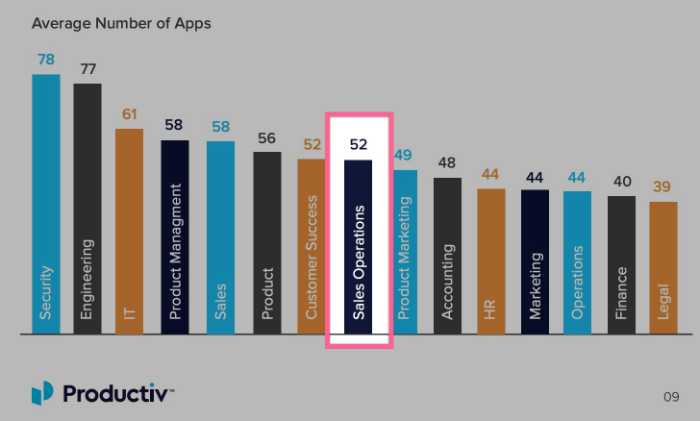
This causes mass data fragmentation. Don't worry, you are not alone in experiencing this. 75% of organizations do not have a complete architecture in place to manage an end-to-end set of data.

We are in the midst of a massive data crisis.
Nearly half of all business leaders in mid-size and enterprise companies have no idea how they use their apps or how stretched out (sprawl) their SaaS applications are.
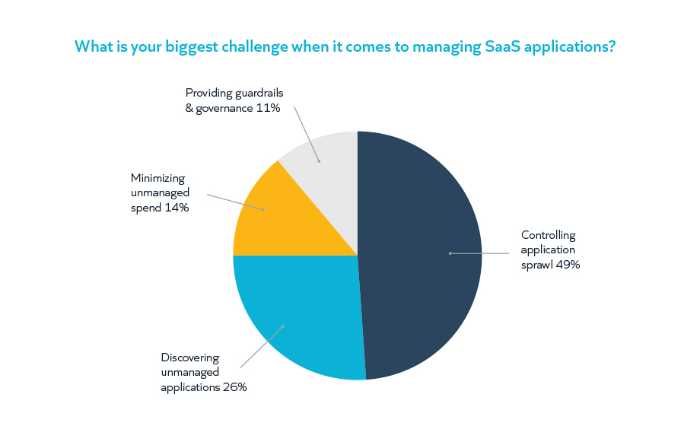
Let's look more closely at the relationships between the number of applications used to manage customer relationships and the total cost of ownership. We can see that using more solutions comes with a higher cost mainly because using multiple tools means you need more people, which costs more money. (source)
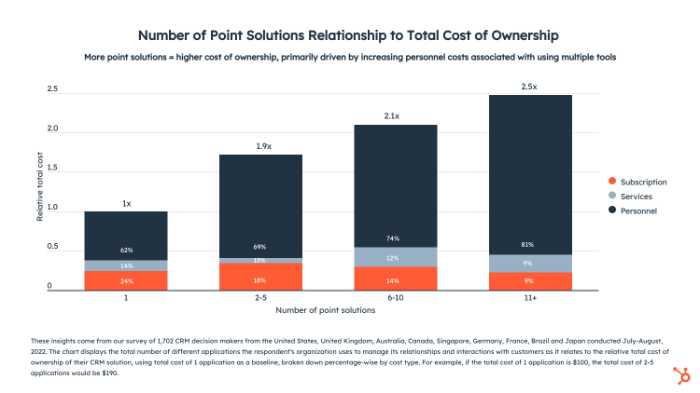
Most SDRs are fresh out of college and have never had a job. Now they're being asked to use apps they've never heard of, collect data that isn't connected, and navigate new waters without any guidance.
No wonder there's so much confusion!
Oh, and because you use more tools, you need to hire more consultants to train them or manage the "fragmented data."
The other disconnect we face is customer disconnect - 64.82% of searches on Google end without a click;
Creating buying personas to establish relevance is vital and challenging for technology executives.
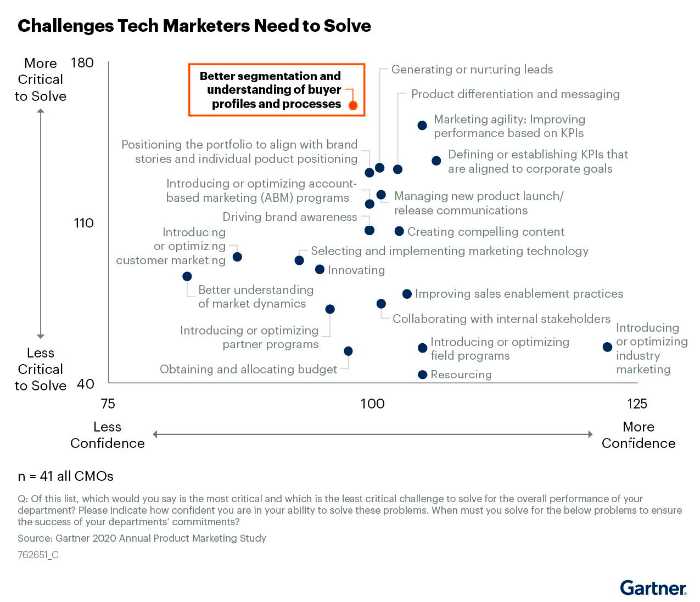 The consequences of an unclear buying person and lack of relevance may cause a higher customer acquisition cost (CAC) as we keep being irrelevant to our customers. The CAC increased drastically in the last years, with over 65%.
The consequences of an unclear buying person and lack of relevance may cause a higher customer acquisition cost (CAC) as we keep being irrelevant to our customers. The CAC increased drastically in the last years, with over 65%.
How can we ask our SDRs to engage with our target audience when we don't know?
Most of the time, we are not aligned because of data and customer insights.
An example is our obsession with net new customer acquisitions. The majority of respondents of this study said that if they could only focus on one area of their business, it would be net-new growth.
While the cost of acquisition of new customers is 4X more than upsell.
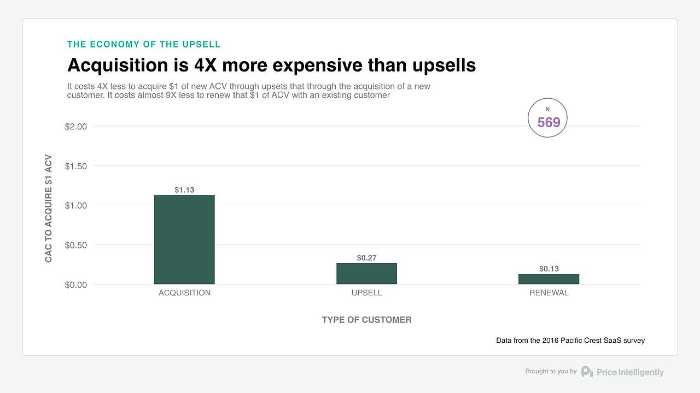
Improving retention or monetization has a two to four times greater influence on growth than acquiring new consumers.
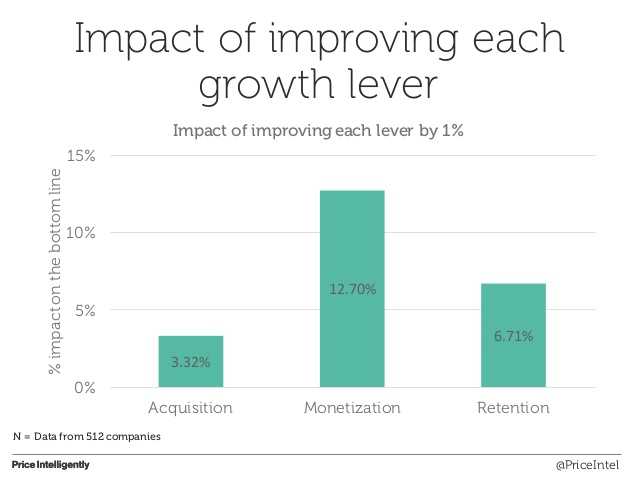
This all is proof of a massive misalignment between sales and customer success in the pursuit of revenue growth.
While SDRs have a massive role in bringing in new customers, imagine if you could equip them to bring in the right customers that you can upsell later.
This requires you to understand your data, be relevant to your buying persona and align with your teams to engage with lookalike customers.
Now is more important than ever as we see significant growth in the cost of reaching new prospects.
It is a complex mission, but the dinosaur can be diced into pieces to solve the disconnect. It starts by reversing the challenges, as you could have predicted.
For years we spent time developing and integrating the right tools, data and know-how to better connect with customers. I might be biased, but I believe today that HubSpot is the most robust tech stack there which is an all-in-one platform.
And I go with that solution because it is simple, flexible and scalable no matter the size of your business.
I am not here to compare CRMs, SEPs, MEPs, or any sales operations technologies. I used a bunch of them. Friends and clients call me a tools geek.
Something is clear from the data and customer insights, 'all in platforms' are the once bring ROI.
Secondly, we need to look at buying personas and customer insights in our revenue platform to determine the LTV and CAC for each category of buying personas.

Having this clarity, we can guide our SDRs on what buying personas to reach out to.
A company's success relies heavily on its sales development process, but it can be challenging.
Sales Development Representatives (SDRs) are vital to any company's success, but it can be challenging to get their operations right. With the right tools and training, your SDR team can be more effective in reaching your target customers. To improve your SDR operations, check out this webinar on "How to ramp up your SDR operations to support account-based programs?"
"The sales digitalization team should be led by a “boundary spanner” respected by both sales and marketing people and tech experts" - Harvard Business Review - September Issue 2022.
Get in touch with us if you need help or join our open workshops and webinars if you need sales development operations help.

